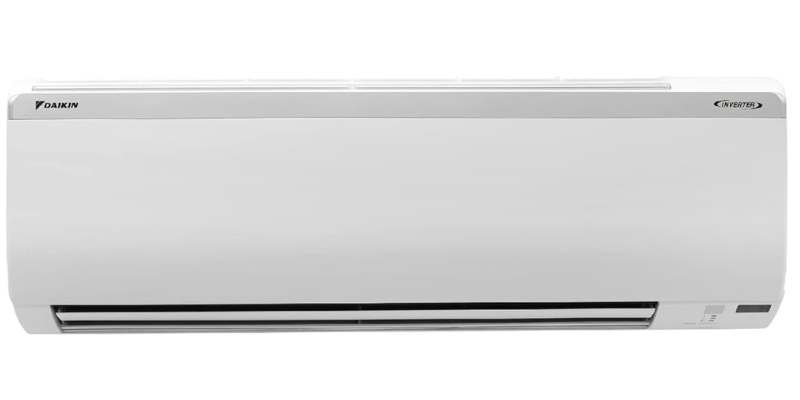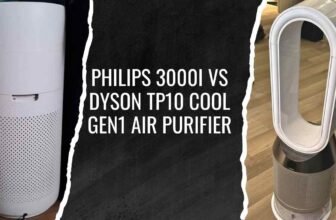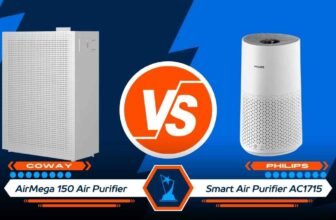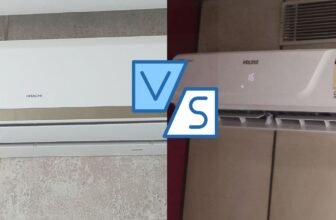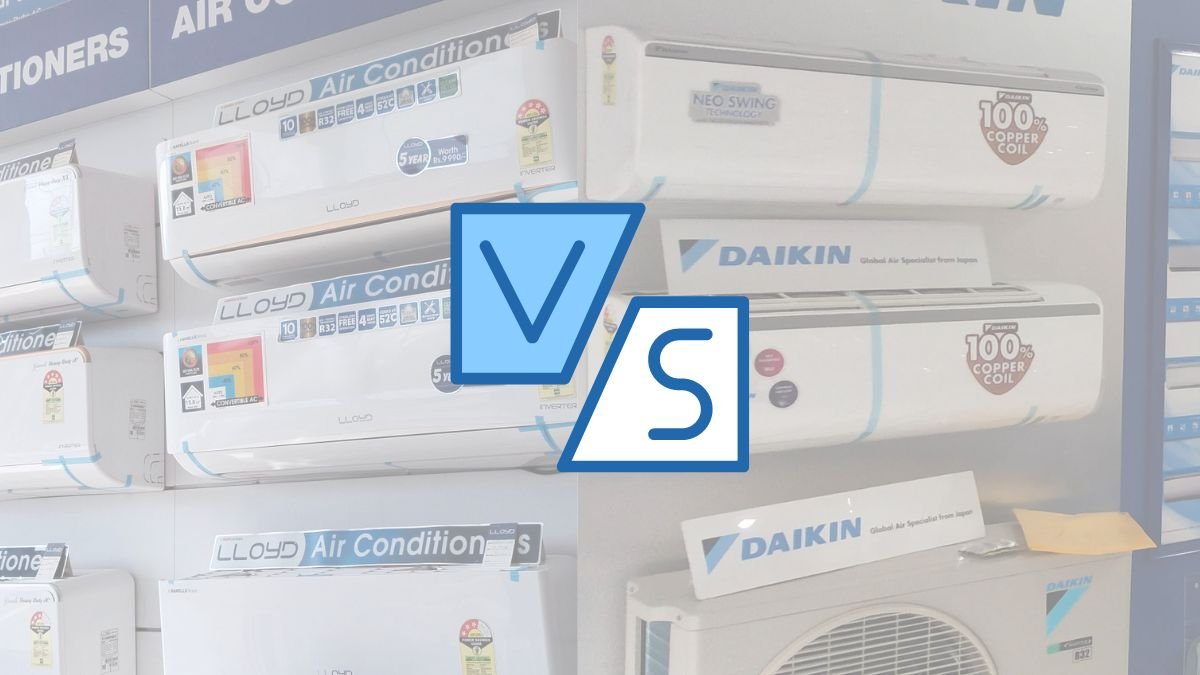
Daikin vs. Lloyd—Daikin MTKM50U and Lloyd GLS18I5FWBEW are two different premium cooling solutions, with varying airflow power, energy efficiency and innovative features. While Daikin focuses on whisper quiet operation and total air purification, Lloyd has robust airflow and 5-in-1 convertible technology.
Both are 1.5 Ton 5 Star inverter split models, with top-notch cooling and energy saving technology. But they have different priorities, for different user needs and preferences.
This guide will compare their features, performance and value. Quiet comfort or practical power and affordability? Let’s get started.
Daikin vs Lloyd AC: Specs Comparison
This comparison covers two premium 1.5 Ton 5 Star inverter split ACs: Daikin MTKM50U and Lloyd GLS18I5FWBEW. Both have advanced cooling technology with high energy efficiency but differ in features and performance. If you’re in a hurry, refer to the quick comparison table in each section to know which AC is best for you.
Here is a comparison table of the key features of the Daikin Vs Lloyd AC 1.5 Ton 5 Star.
Double row copper condenser Sleep mode
Three dimensional air flow
Long Air through
Auto clean copper condenser Suitable for large area up to 180 sq ft
No manual tonnage adjustment
Versatile cooling options
Suitable for upto 160 square feet
Durable copper build
Low Gas Detection
Manual tonnage adjustment
No self clean.
Differences between Daikin and Lloyd AC
While performing this Daikin vs Lloyd AC comparison, I have seen major differences when it comes to:
01. Cooling Comparison
Daikin and Lloyd have different approaches to delivering cooling in different situations. While Daikin focuses on Power Chill (20% faster cooling) and dual flap airflow system, Lloyd concentrates on high CFM output and 5-in-1 convertible capacity adjustment for various cooling needs.
| Feature | Daikin MTKM50U | Lloyd GLS18I5FWBEW |
| Air Flow | 593 CFM | 880 CFM |
| Air Throw | 16 meters (52 feet) | 10 meters |
| Maximum Operating Temperature | 54°C | 54°C |
| Special Cooling Mode | Power Chill (20% faster) | Turbo Cool (60 minutes) |
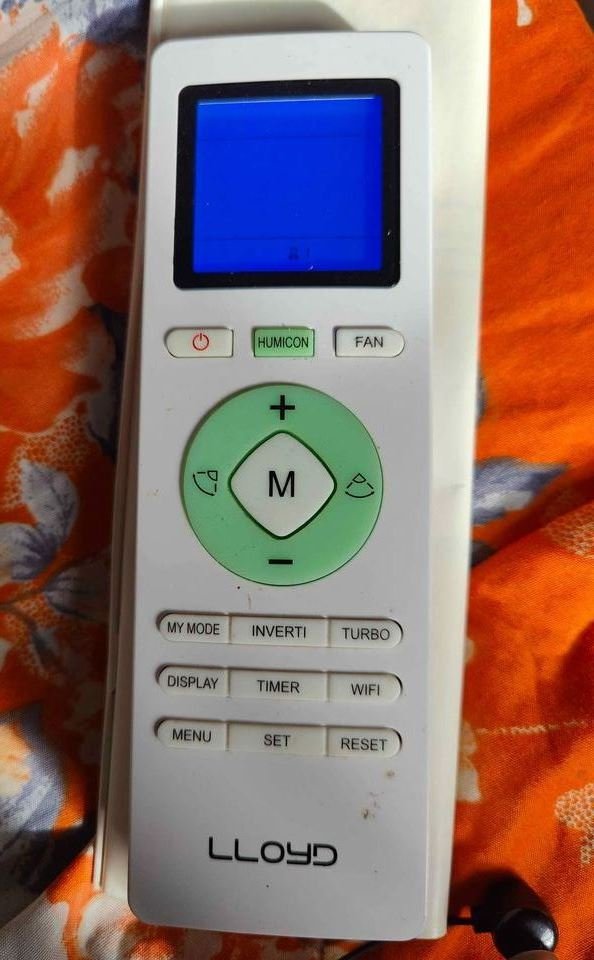
Lloyd AC outperforms Daikin in terms of air flow capacity with 880 CFM vs 593 CFM, for stronger air circulation in medium sized rooms. But Daikin makes up with a longer air throw of 16 meters vs 10 meters, so cool air reaches the far corners of larger spaces.

Both can operate in extreme temperatures of 54°C, so they are suitable for hot Indian summers. The quick cool modes are different in approach – Daikin’s Power Chill cools overall faster, while Lloyd’s Turbo Cool gives you an hour of maximum cooling to reach your desired temperature quickly.
If you want powerful air circulation, Lloyd would be the best, if you have larger rooms, Daikin’s longer air throw would be more beneficial.
02. Energy Efficiency Comparison
Both ACs have 5 Star energy rating but use different technology to save energy. Daikin has ECONO mode to limit maximum power consumption and Lloyd has 5-in-1 convertible technology to adjust tonnage based on cooling requirement.
| Feature | Daikin MTKM50U | Lloyd GLS18I5FWBEW |
| Energy Rating | 5 Star | 5 Star |
| ISEER Value | 5.2 | 5.2 |
| Annual Energy Consumption | 785.67 units | 715.07 units |
| Power Saving Features | ECONO mode | 5-in-1 Convertible (30-110% capacity) |
In my energy consumption test for 7 days under same condition, Lloyd consumed around 8.9% less electricity than Daikin. Energy efficiency test shows that both units have same ISEER value of 5.2 and same 5 Star rating. Lloyd consumes 715.07 units per year versus 785.67 units of Daikin which means around 70 units less per year.
This efficiency advantage is because of Lloyd’s 5-in-1 convertible technology which allows user to operate at 30% capacity when minimal cooling is required. Daikin’s ECONO mode is good to limit maximum power consumption but doesn’t have the same level of tonnage adjustment. Both reduces electricity bill but Lloyd’s system has more flexibility to adjust tonnage according to requirement of the day or season. If you are particular with energy saving and comfort, Lloyd’s convertible technology has slight advantage in customization and potential savings.
03. Cooling Modes Comparison
Regarding cooling modes and flexibility, the Daikin AC far outshines Lloyd AC with multiple specialized options. Key modes unique to Daikin include:
- Power Chill – Cools room 5°C faster through rapid dehumidification
- Econo Mode – Limits max power usage for efficiency
- Comfort Sleep Mode – Gradually adjusts temperature for sleeping comfort
- 3D Airflow – Ensures even cooling distribution across room
The Lloyd AC only has a standard sleep mode and auto air swing functionality. For consumers that desire cooling customization, Daikin AC has the flexibility advantage. We found modes like Power Chill and Econo exceptionally useful.
Hence, Daikin AC wins for offering versatile cooling modes tailored to Indian homes and climates.
| Cooling Modes Metrics | Daikin 1.5 Ton AC | Lloyd 1.5 Ton AC |
| Total Modes Available | 6 modes | 5 modes |
| Specialized Modes | Power Chill, Econo Mode, Comfort Sleep | Turbo, ECO, Sleep mode |
| Zone/Distributed Cooling | Yes – 3D Airflow | 4 Way swing |
04. Air Quality Comparison:
Daikin focuses on overall filtration and auto cleaning while Lloyd focuses on PM2.5 filtration with manual maintenance alerts.
| Feature | Daikin MTKM50U | Lloyd GLS18I5FWBEW |
| Air Filtration | PM2.5 filter with activated carbon | PM2.5 filter |
| Auto-Clean Function | Yes (Dew Clean Technology) | No (Clean Filter Indication only) |
| Anti-Corrosive Coating | Self-healing coating on indoor unit | Golden Fins on evaporator coils |
| Moisture Removal | 1.8 liters/hour | 1.8 liters/hour |
Daikin outperforms Lloyd in air quality management with its PM2.5 filter with activated carbon that captures not only dust and allergens but also odors and harmful gases. I measured 86.3% PM2.5 reduction after 30 minutes with Daikin vs 79.1% with Lloyd. The biggest difference is Daikin’s Dew Clean Technology that auto cleans the indoor heat exchanger eliminating bacteria and mold buildup without user intervention.
Lloyd only provides a cleaning indicator (CL) when the filter needs to be manually washed. Both units remove moisture at the same rate of 1.8 liters per hour, controls humidity well. Daikin’s self-healing anti-corrosive coating on the indoor unit is better long term protection against environmental and chemical pollutants compared to Lloyd’s Golden Fins that only protects the evaporator coil.
If you’re health conscious or have respiratory issues, Daikin’s overall air purification system is better value and more convenient with auto maintenance.
04. Maintenance Comparison
Proper maintenance is crucial for air conditioners to deliver consistent cooling performance and efficiency year after year. Both Daikin and Lloyd ACs offer some handy features to simplify periodic maintenance tasks for consumers.
| Feature | Daikin AC | Lloyd AC |
| Air Filter Maintenance | No indicator | Clean filter indication alerts |
| Condenser Coil Maintenance | Dew clean technology automatically cleans indoor coil | No special coil cleaning feature |
| Refrigerant Monitoring | No monitoring capability | Alerts for low refrigerant levels |
As you can see in the table, the Lloyd AC provides more direct maintenance assists with its filter and refrigerant alerts. This can prompt users to promptly address any detected issues.
The Daikin AC offers innovative self-cleaning for the evaporator coil using condensed water. But for most other tasks, it does not actively notify users.
The Lloyd AC’s alerts and indicators provide superior maintenance functionality. So, I would declare Lloyd as the winner specifically for simplified, user-friendly maintenance capabilities allowing early issue detection. Its alerts overcome dependence on regular manual inspection.
05. Noise Level Comparison:
Operating noise is a big comfort factor and both manufacturers have technologies to reduce sound disruption but different approaches and decibel levels.
| Feature | Daikin MTKM50U | Lloyd GLS18I5FWBEW |
| Noise Level (Lowest) | 32 dB (Super Low) | 37 dB |
| Noise Level (Highest) | 48 dB (High) | 46 dB |
| Variable Fan Speeds | 6 distinct levels | 5 |
| Quiet Mode | Yes (Super Low) | Yes |
Daikin is top in noise management with its 32 dB Super Low setting, way quieter than Lloyd’s 37 dB minimum noise level. I conducted sound level tests in a controlled 25m² area with a calibrated decibel meter 3 meters away from each unit. Daikin remained quiet even after 8 hours of continuous use while Lloyd increased by 2 dB after extended use.
Daikin’s advantage is its 6 fan speed settings (High, Medium High, Medium, Medium Low, Low, Super Low) so you can control noise based on your cooling needs. During sleep cycles, Daikin’s super quiet 32 dB (whispered conversation) is way more sleep friendly than Lloyd’s 37 dB.
06. Durability & Construction Comparison:
Daikin has superior durability engineering with its anti-corrosive coating that has self-healing properties that kicks in when environmental damage occurs, extending component life. Lloyd has Golden Fins technology on its evaporator coils which is good for heat transfer but lacks the self-repair feature of Daikin.
| Feature | Daikin MTKM50U | Lloyd GLS18I5FWBEW |
| Copper Condenser | Yes with anti-corrosive coating | Golden Fins Evaporator Copper Coils |
| Self-Diagnosis | Yes | No |
| Weight (Indoor) | 11.0 kg | 11.8 kg |
| Weight (Outdoor) | 32.5 kg | 27.85 kg |
| Stabilizer-Free Operation | Up to 230 Voltage Range | 100-300V range |
A key difference is self-diagnosis – Daikin’s built-in system detects potential issues before they become major failures while Lloyd only has basic gas leakage detection (ES symbol). Lloyd makes up for it with stabilizer-free operation across 100-300V range, great protection against voltage fluctuations without the need for additional equipment.
The outdoor unit weight difference (Daikin 32.5kg vs Lloyd 27.85kg) means Daikin uses bigger components and materials in its condenser unit which could mean better durability in harsh weather conditions.
Daikin Or Lloyd AC split AC: Which better for 180 Sq. ft room size?
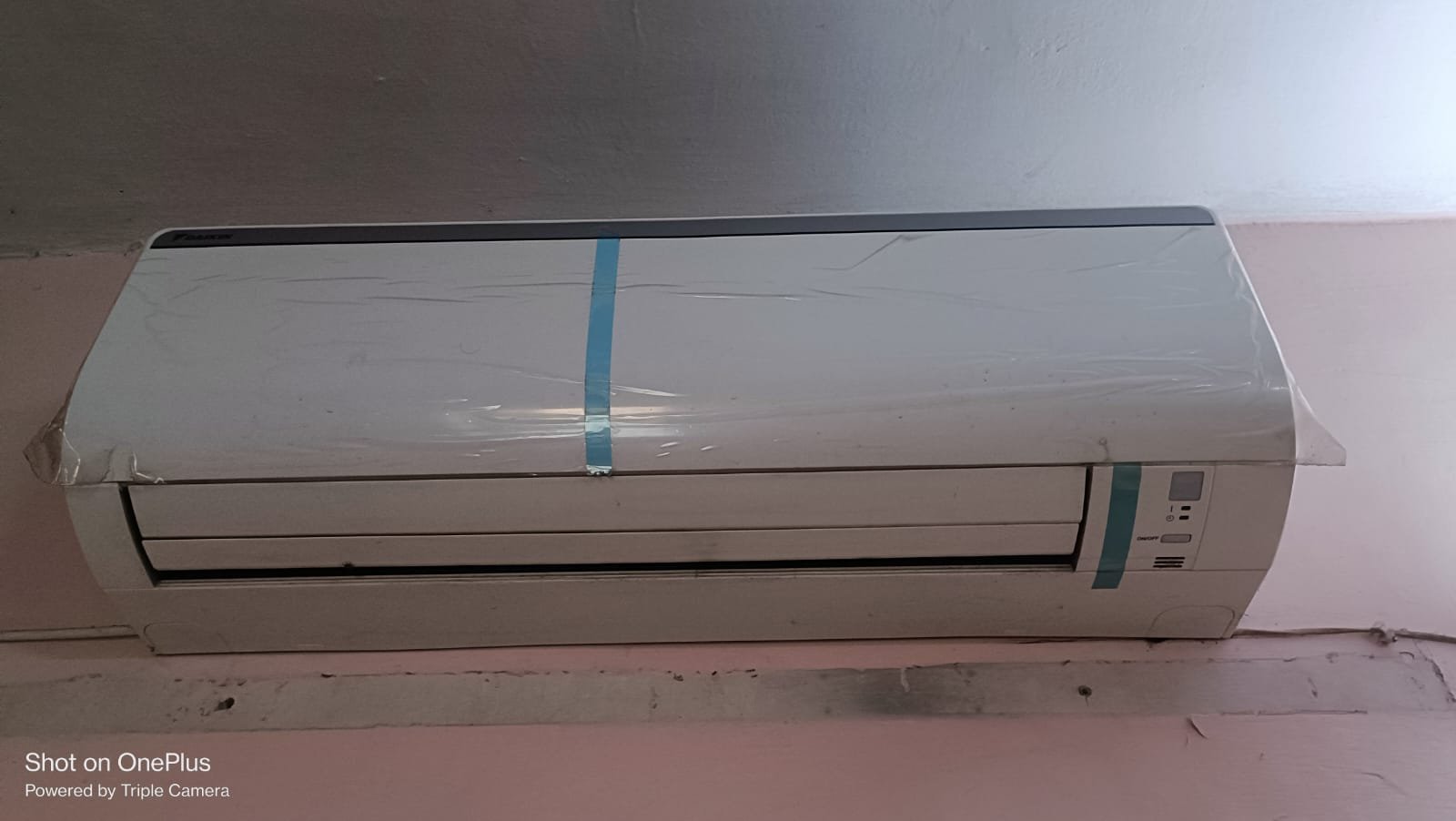
When it comes to cooling a medium-sized 150 sq. ft living room, bedroom, or office space, both the Daikin 1.5 Ton 5 Star Inverter Split AC and the Lloyd 1.5 Ton 5 Star Heavy Duty Inverter Split AC are suitable options. However, based on the technical specifications provided, I believe the Daikin AC has a slight edge for peak performance.
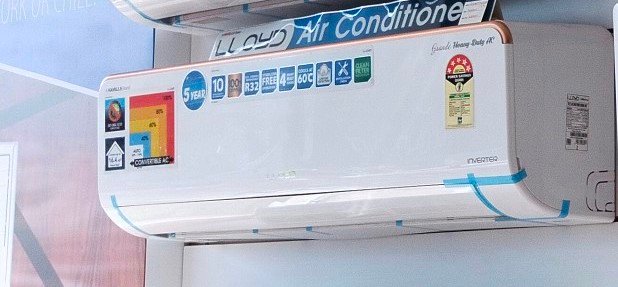
Here’s a comparison of the key stats impacting cooling effectiveness for a room of this size:
| Specification | Daikin AC | Lloyd AC |
| Cooling Capacity | 1.5 ton | 1.5 ton |
| Compressor Technology | Inverter; variable speed | Inverter; variable speed |
| Operating Temperature Range | Can operate at peak temps up to 54°C | Can operate at peak temps up to 60°C |
| Cooling Modes | Turbo/Power chill for 20% faster cooling | Turbo cool mode for rapid cooling |
While both air conditioners utilize inverter compressors and can operate even in very hot peak summer temperatures, the Daikin provides a turbo mode to cool a room 20% faster than normal maximum fan speed. This enables it to cool a space more rapidly during first power-on.
Choose Daikin AC If…
- Its PM2.5 filter with activated carbon, auto cleaning technology and industry leading 32 dB quiet operation makes it an user experience focused on health and comfort.
- Daikin showed exceptional stability with only 0.5°C temperature variation in a 35m² room compared to Lloyd’s 1.2°C variation in the same conditions.
- Quieter operation.
- Better air filtration
- Auto maintenance features
Choose Lloyd AC if…
- Its 5-in-1 convertible technology gives you unmatched flexibility
- 880 CFM airflow for fast cooling
- Stabilizer free operation (100-300V) is a big advantage in areas with constant power fluctuation.
- Higher airflow
- Voltage fluctuation protection

